What is an Artificial Intelligence Robot? Definition and Concept
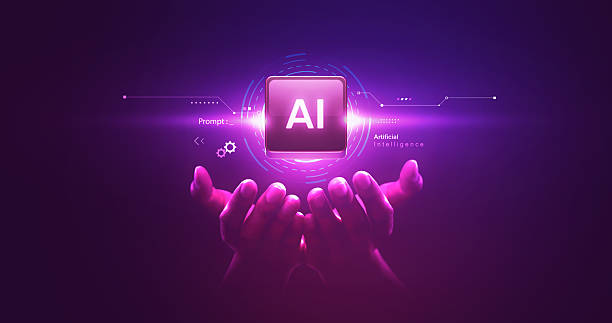
#Artificial Intelligence Robot is a combination of two fields: #Robotics and #Artificial_Intelligence.
In short, an AI robot is a physical or virtual machine that uses artificial intelligence algorithms to perform tasks that usually require human intelligence.
These tasks can include learning, reasoning, problem-solving, natural language understanding, and pattern recognition.
AI robots can be influential in various industries.
The concept of an AI robot goes beyond a simple automated device; these entities are able to adapt to the environment, make independent decisions, and improve their performance over time.
In fact, an AI robot attempts to increase efficiency and accuracy in performing various tasks by imitating human cognitive abilities.
Robots equipped with artificial intelligence can operate in complex and unpredictable environments.
These robots collect data using sensors and analyze and interpret them using artificial intelligence algorithms.
This process allows the robot to make informed decisions and react appropriately.
AI robots have applications in areas such as manufacturing, healthcare, logistics, and even entertainment.
AI robots, in the truest sense of the word, are shaping the future of human-machine interaction.
Are you losing business opportunities due to an outdated website? With Rasaweb, solve the problem of not attracting potential customers through your website forever!
✅ Attract more high-quality leads
✅ Increase brand credibility in the eyes of customers
⚡ Get a free consultation for corporate website design
Main Components of an AI-Equipped Robot
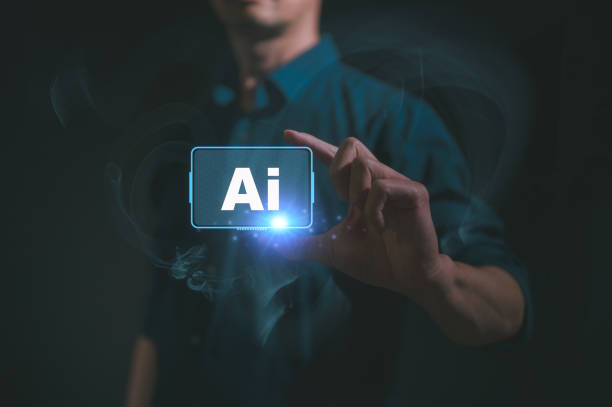
An AI robot consists of several key components that work together to enable intelligent operation.
These components include:
- Sensors: Sensors collect information from the environment.
This information can include visual data (through cameras), auditory data (through microphones), tactile data (through pressure sensors), or information about position and orientation (through GPS and IMU). - Processors: Processors are responsible for analyzing and interpreting the data collected by the sensors.
These processors typically use artificial intelligence and machine learning algorithms to extract patterns and useful information from the data. - Actuators: Actuators allow the robot to interact with the physical environment.
These actuators can include motors, cylinders, arms, and other devices that allow the robot to move, manipulate objects, and perform physical tasks. - Software: Software is the heart of the AI robot.
This software includes artificial intelligence algorithms, the robot’s operating system, control programs, and user interfaces that allow the robot to perform its tasks effectively.
These components work together to form an integrated system that is capable of operating automatically and intelligently.
Using these components, the AI robot can operate effectively in various environments and perform a variety of tasks.
Amazing Applications of Smart Robots
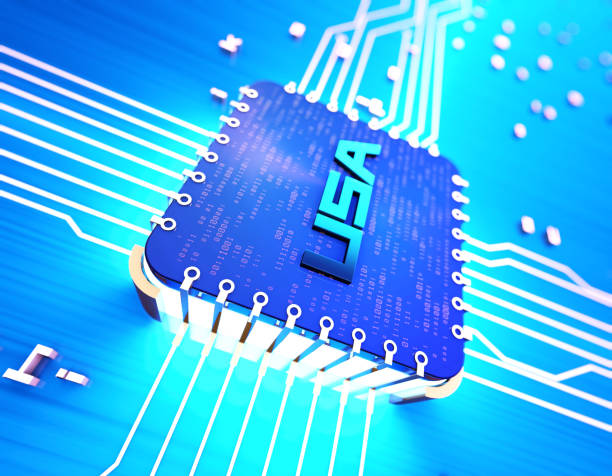
AI robots have extensive applications in various industries and fields.
Some of the most important of these applications include:
- Manufacturing: AI robots are used in production lines to perform repetitive, heavy, and dangerous tasks.
These robots can assemble parts, perform painting, and package products with high accuracy and speed. - Healthcare: In the field of medicine, AI robots are used to perform precise surgeries, provide remote medical care, and assist people with disabilities.
These robots can perform complex surgeries with high precision and help doctors diagnose diseases. - Logistics: In the logistics industry, AI robots are used to manage warehouses, transport goods, and deliver packages.
These robots can increase the efficiency and speed of logistical operations by optimizing routes and schedules. - Customer Service: AI robots, in the form of chatbots and virtual assistants, are used to provide customer service, answer questions, and solve customer problems.
These robots can be available 24 hours a day, 7 days a week, and help customers anytime, anywhere. - Exploration: In dangerous and remote environments, AI robots are used for exploration.
These robots can be sent to the depths of the oceans, other planets, and areas contaminated with hazardous materials and collect valuable information.
These are just some of the extensive applications of AI robots.
With the advancement of technology, it is expected that the applications of these robots will become more widespread and diverse in the future.
| Application Area | Description |
|---|---|
| Manufacturing | Used in production lines for repetitive and dangerous tasks |
| Healthcare | Performing precise surgeries and providing remote medical care |
| Logistics | Managing warehouses and transporting goods |
| Customer Service | Providing customer service through chatbots |
| Exploration | Exploring dangerous and remote environments |
Advantages and Disadvantages of Using AI Robots
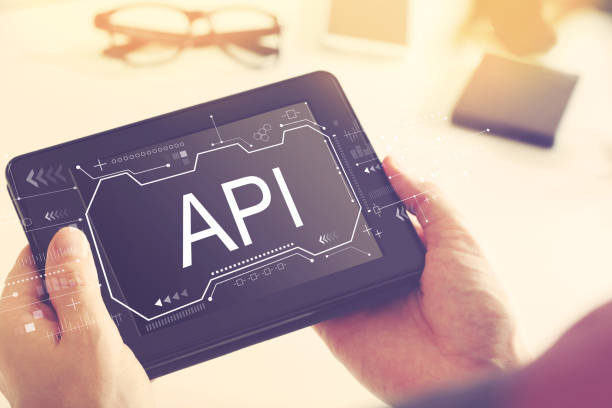
The use of AI robots has numerous advantages and disadvantages that should be considered.
The main advantages include:
- Increased Productivity: AI robots can perform tasks faster and more accurately than humans, thereby increasing productivity.
- Cost Reduction: By replacing human labor with AI robots, costs related to wages, insurance, and other employee benefits can be reduced.
- Improved Safety: AI robots can work in dangerous and high-risk environments instead of humans, thereby improving safety.
- High Accuracy: AI robots can perform tasks with very high accuracy and reduce the likelihood of errors.
- 24/7 Availability: AI robots can be available 24 hours a day, 7 days a week, and provide services.
Besides the advantages, the use of AI robots also has disadvantages that should be considered:
- High Initial Cost: Purchasing and deploying AI robots can be costly.
- Need for Expertise: Setting up, maintaining, and repairing AI robots requires expertise and technical knowledge.
- Ethical Concerns: The use of AI robots can raise ethical concerns related to job loss, privacy, and discrimination.
- Limitations: AI robots still have limitations in some areas and cannot completely replace humans.
By considering the advantages and disadvantages, a better decision can be made about using AI robots in specific situations.
Does your current website reflect your brand’s credibility as it should? Or does it drive away potential customers?
Rasaweb, with years of experience in designing professional corporate websites, is your comprehensive solution.
✅ A modern, beautiful website tailored to your brand identity
✅ Significant increase in attracting leads and new customers
⚡ Contact Rasaweb now for a free corporate website design consultation!
What Will the Future of Robotics and Artificial Intelligence Be?
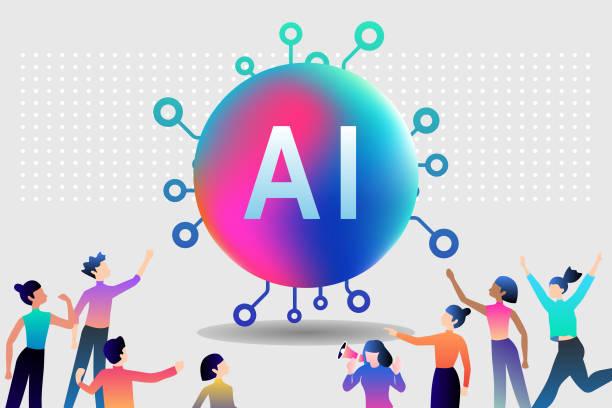
The future of robotics and artificial intelligence is very bright and full of potential.
With the increasing advancement of technology, AI robots are expected to play a more important role in everyday life and various industries.
Some of the important trends in this area include:
- Increased Learning Capabilities: In the future, AI robots will be able to learn faster and more accurately and adapt to new environments.
- Improved Human-Robot Interaction: In the future, AI robots will be able to interact with humans more naturally and effectively.
- Development of Autonomous Robots: In the future, AI robots will be able to perform more complex tasks without human intervention.
- Expansion of Applications: In the future, AI robots will be used in new and diverse fields such as education, agriculture, and art.
However, the development of AI robots will also come with challenges.
For example, ethical issues related to artificial intelligence, cybersecurity, and the impact of AI robots on the labor market must be addressed.
By properly managing these challenges, the enormous potential of AI robots can be harnessed to improve human lives.
AI robots will significantly change our lives in the very near future.
How to Build an AI Robot: A Step-by-Step Guide

Building an AI robot is a complex process that requires knowledge and expertise in various fields such as robotics, artificial intelligence, and programming.
However, by following a step-by-step approach, this process can be simplified.
The main steps in building an AI robot include:
- Define the Goal: First of all, you must define your goal for building an AI robot.
What task do you want the robot to perform? What features should it have? - Choose Hardware: Based on your goal, you must choose the appropriate hardware.
This hardware can include mechanical parts, sensors, processors, and actuators. - Design Software: After choosing the hardware, you must design the required software.
This software includes artificial intelligence algorithms, the robot’s operating system, control programs, and user interfaces. - Programming: After designing the software, you must program it using appropriate programming languages such as Python, C++, or Java.
- Testing and Evaluation: After programming, you must test and evaluate the robot.
Does the robot work correctly? Does it perform its tasks well? - Optimization: After testing and evaluation, you must optimize the robot.
Can the robot’s performance be improved? Can costs be reduced?
By following these steps, you can build an AI robot that performs its tasks well.
Of course, building an AI robot is an iterative process and may require numerous changes and improvements.
Examining the Challenges and Obstacles Facing the Development of Smart Robots
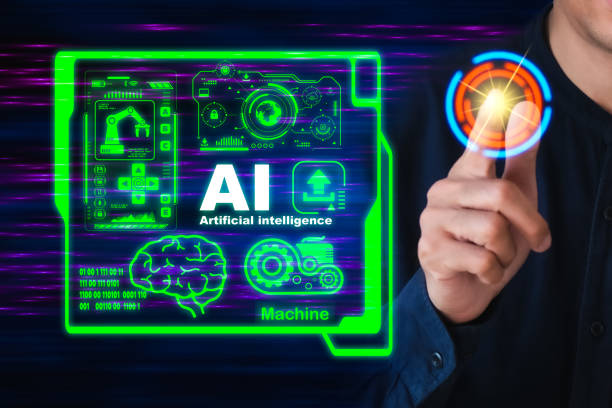
The development of AI robots faces numerous challenges and obstacles that must be overcome.
Some of the most important of these challenges include:
- High Cost: Developing and producing AI robots can be costly.
- Shortage of Experts: A shortage of experts in the fields of robotics and artificial intelligence is a serious obstacle to the development of this field.
- Ethical Issues: The use of AI robots can raise ethical issues related to job loss, privacy, and discrimination.
- Technological Limitations: Current technologies still have limitations in some areas and cannot fully meet the needs of AI robots.
- Regulations and Laws: The lack of appropriate regulations and laws can hinder the development and use of AI robots.
To overcome these challenges, more investment in research and development, training of specialists, the development of appropriate regulations and laws, and attention to ethical issues are needed.
By removing these obstacles, the enormous potential of AI robots can be harnessed to improve human lives.
The Role of AI Robots in Everyday Life
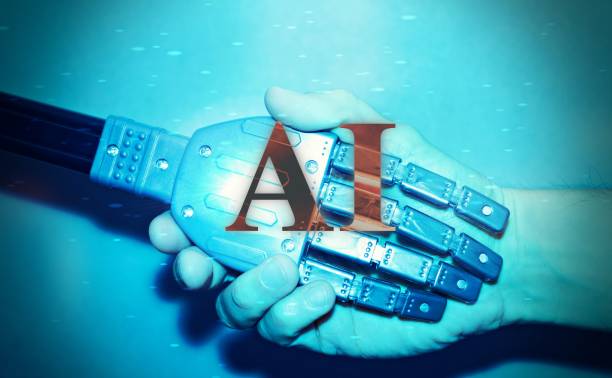
AI robots are increasingly present in our daily lives and play an important role.
Some of the applications of AI robots in everyday life include:
- Virtual Assistants: Virtual assistants such as Siri, Alexa, and Google Assistant use AI robots to provide various services to users.
These assistants can answer users’ questions, schedule appointments, play music, and control smart homes. - Self-Driving Cars: Self-driving cars use AI robots to drive without human intervention.
These cars can increase safety, reduce traffic, and help people with disabilities. - Household Robots: Household robots use AI robots to perform various tasks around the house.
These robots can clean the house, care for the elderly and children, and provide home security. - Customer Service: AI robots, in the form of chatbots and virtual assistants, are used to provide customer service, answer questions, and solve customer problems.
With the advancement of technology, it is expected that AI robots will play an even greater role in our daily lives and help improve the quality of life.
| Application Area | Description |
|---|---|
| Virtual Assistants | Providing various services to users |
| Self-Driving Cars | Driving without human intervention |
| Household Robots | Performing various tasks around the house |
| Customer Service | Answering questions and solving customer problems |
Are you losing business opportunities due to an outdated website? With Rasaweb, solve the problem of not attracting potential customers through your website forever!
✅ Attract more high-quality leads
✅ Increase brand credibility in the eyes of customers
⚡ Get a free consultation for corporate website design
Ethical Considerations in Designing and Using AI Robots

Designing and using AI robots requires attention to numerous ethical considerations.
Some of the most important of these considerations include:
- Privacy: AI robots can collect a lot of information about users.
It must be ensured that this information is managed securely and responsibly and that users’ privacy is protected. - Discrimination: Artificial intelligence algorithms can be unintentionally discriminatory.
It must be ensured that these algorithms are designed fairly and prevent discrimination against specific groups. - Accountability: If an AI robot makes a mistake, who will be responsible? There must be mechanisms for determining accountability for the actions of AI robots.
- Job Loss: AI robots can cause job loss.
Solutions must be provided to mitigate the negative effects of this issue on the labor market. - Control: Who should have control of AI robots? It must be ensured that AI robots act in the interests of humans and are controlled by responsible individuals.
By considering these ethical considerations, the responsible development and use of AI robots can be ensured.
Learning Resources for Those Interested in Robotics and Artificial Intelligence
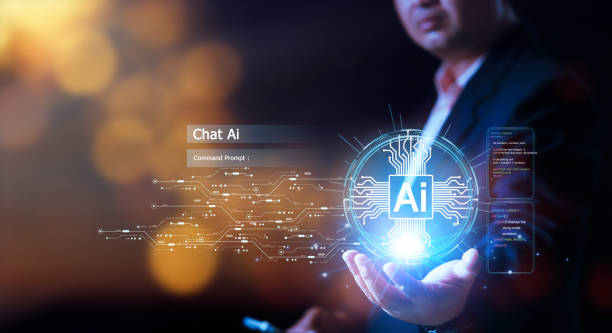
If you are interested in robotics and artificial intelligence, there are numerous learning resources available to you.
Some of these resources include:
- Online Courses: Educational websites such as Coursera, Edx, and Udemy offer numerous training courses in the field of robotics and artificial intelligence.
- Books: There are numerous books on robotics and artificial intelligence that can help you learn the concepts and techniques of these fields.
- Scientific Articles: Scientific articles published in reputable journals and conferences can provide up-to-date information on the latest achievements and advances in the field of robotics and artificial intelligence.
- Practical Projects: Completing practical projects can help you learn the concepts and techniques of robotics and artificial intelligence practically.
- Online Communities: There are numerous online communities in the field of robotics and artificial intelligence where you can become a member and exchange views with other enthusiasts in these fields.
By using these resources, you can increase your knowledge and skills in the field of robotics and artificial intelligence and become an expert in this field.
FAQ
| Row | Question | Answer |
|---|---|---|
| 1 | What is an AI robot? | An AI robot is a machine capable of understanding, reasoning, learning, and problem-solving, and can perform complex tasks with relative autonomy. |
| 2 | What are the most important applications of AI robots? | Main applications include industrial production, customer service (chatbots), medicine and surgery, autonomous transportation, space exploration, and military affairs. |
| 3 | What is the main difference between an AI robot and a regular robot? | A regular robot only follows programmed instructions, while an AI robot can learn from data, make decisions, and adapt to new environments. |
| 4 | How do AI robots learn? | They learn through machine learning algorithms (such as deep learning, reinforcement learning) and processing vast amounts of data, identifying patterns and improving their performance. |
| 5 | Can AI robots have emotions? | Currently, AI robots do not have real emotions in the human sense. They can mimic or recognize emotions, but do not understand or experience them. |
| 6 | What are the current limitations of AI robots? | Limitations include the need for large amounts of data, the inability to understand abstract concepts, the lack of real creativity, ethical issues, and the challenges of generalizability in new environments. |
| 7 | What is the role of artificial intelligence in the development of Humanoid robots? | Artificial intelligence helps humanoid robots walk, maintain balance, understand their surroundings, interact with humans, and perform complex tasks. |
| 8 | How is the future of AI robots predicted? | It is predicted that AI robots will become smarter, more autonomous, and capable of performing more complex tasks in everyday life and industry, and their interaction with humans will increase. |
| 9 | Can AI robots replace all human jobs? | It is unlikely that all human jobs will be replaced. Robots will take over many repetitive and dangerous tasks, but jobs that require creativity, empathy, and moral judgment will remain. |
| 10 | What ethical and social challenges arise with the expansion of AI robots? | Challenges include issues related to privacy, data security, ethical decision-making by robots, impact on employment, and accountability in the event of errors. |
And other services of Rasa Web Advertising Agency in the field of advertising
Intelligent Data Analysis: Designed for businesses looking to manage campaigns through Google Ads management.
Intelligent Data Analysis: An innovative platform to improve user engagement with custom programming.
Smart Google Ads: A combination of creativity and technology to increase sales by optimizing key pages.
Smart Advertising Campaign: Professional optimization for user engagement using precise audience targeting.
Smart Link Building: An innovative platform to improve customer acquisition by optimizing key pages.
And over a hundred other services in the field of internet advertising, advertising consulting, and organizational solutions
Internet Advertising | Advertising Strategy | Advertorial
Sources
What is Robotics? – Iran Robotics
,What is Artificial Intelligence? – Aparat
,Smart Robots are Changing Their Applications – Fars News Agency
,What are the applications of AI in robotics? – Quora
? For your business to shine in the digital world, Rasaweb Afarin accompanies you by providing comprehensive digital marketing solutions including custom website design, SEO optimization, and targeted advertising campaigns. With us, have a powerful and effective presence in the online space and pave your path to success.
📍 Tehran, Mirdamad Street, next to the Central Bank, South Kazerun Alley, Ramin Alley No. 6
“`



